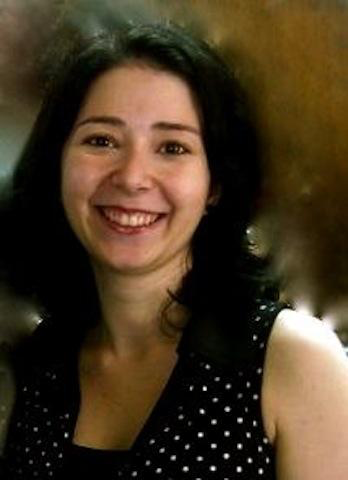To CLIL or Not To CLIL in Bilingual Education?
Ten years ago, you were working as an English teacher at a school, and your worries were how to help students develop their productive and receptive skills. Your lesson was basically focused on reading, writing, listening, and speaking, even if you followed innovative trends, included different technologies and authentic materials.
Then, something happened.
You heard of CLIL. Every single aspect of your skills-based lesson changed when your coordinator, your colleagues and the publisher’s rep started to show you the integration of language and content. Everything was possible now. And you had a lot more on your plate: your lesson would include learning and/or practicing contents that were not your scope in the past, such as science and maths. You started integrating your lesson to other fields of study and school subjects. You started sharing and learning much more than what you already did with your fellow teachers of English as a foreign language.
Then something else happened.
You heard your school has gone bilingual – or better, your school offers Bilingual Education. Does CLIL have anything to do with it? Is it because of CLIL?
The answer is a sound “Probably not”. I’ll share my view on why not with you.
As I’ve mentioned in a previous post, Bilingual Education is not a new thing. Bilingual Education has been present in societies for thousands of years (yes, thousands) so much so that bilingualism should be seen as something ordinary, not as something extra-ordinary, special and fancy. That put, Bilingual Education exists in spite of CLIL, and a bilingual program or the like does not need to be CLIL – not all the time, not in all countries, maybe not even here. :-O
CLIL stands for Content and Language Integrated Learning. It is an approach that is present in schools all over the world: CLIL has been helping teachers teach a foreign, an additional or a second language in partnership with other subjects. Sometimes, it seems to be a very well-organized way of dealing with interdisciplinary and cross-curricular topics without losing track of specific objectives per subject. Other times, it really represents a need of a special community – roughly speaking, something like having some subjects taught in Spanish and some others in Catalan in Barcelona, for example.
As part of its principle, a CLIL unit of work should present learning objectives for each subject it connects. For example: if our lesson plan is focused on a science experiment, we should be aware of the language that is necessary to fulfill such a task, but also of the objectives that the unit of work addresses among the ones that the language syllabus has and the ones that the Science syllabus has as well. Such a unit of work should contribute both ways at the same time that it addresses other points apart from Content: Culture, Citizenship, Cognition, Communication. Yes, it is hard work and it should involve a lot of thinking and planning.
Within these five Cs in CLIL (Content, Culture, Citizenship, Cognition, Communication), language is a learning tool. CLIL, as an approach, is to be seen as something that is context-sensitive in the sense that can and should be adapted to better fulfill the school project and learning expectations. It should not, however, be seen as a straightjacket, as something that is compulsory for bilingual education to happen.
Essentially, CLIL has been helping teachers of English and other languages experiment with cross-curricular and interdisciplinary contexts. Maybe that’s why that is quite a common way for schools to start in the world of bilingual education. To CLIL or not to CLIL seems to be a matter of context in the end.
However, a distinguished academic on CLIL, Do Coyle, points out in the article “The Place of CLIL in (Bilingual) Education” (2018)[see reference below] that the changing global landscapes and complexities have brought upon us something we probably haven’t expected: multiple and different interpretations of what CLIL is and what we can do with CLIL. In the abstract of the article, Coyle (2018) hightlights: “CLIL holds a pivotal position for reframing its potential as a pedagogic, rather than a linguistic phenomenon within the (plurilingual) education agenda”. As a consequence, Coyle (2018) sees the need to delve into three fundamental strands (language, literacies and learning) to suggest a broader view: a pluriliteracy approach that focuses on teaching for deeper learning and that sees CLIL as something that helps pedagogic thinking move forward and beyond the bilingual classroom. So, CLIL has evolved. We have to do so, too.
Your school may have chosen CLIL as the beginning of a beautiful and laborious bilingual project, but it has to consider it as a pluriliteracy approach now to be able to move forward and embrace bilingual education as more. García (2009) has a whole chapter in her book “Bilingual Education in the 21st century” about pedagogy and practices in Bilingual Education in which she discusses bilingual education and its approaches and methods taking grammar, communication and cognition into account as well as principles and practices that should permeate them: social justice and social interaction. That is one of the reasons why I’ve agreed that using CLIL or going beyond it is a matter of context, and that considering the C in Citizenship – if CLIL is the school choice – should be part of the syllabus and the planning as well.
When making a choice, remember that “one cannot ignore the society in which a child lives and his or her social and community context in considering pedagogy” (GARCÍA, 2009, p. 826). To CLIL or not CLIL should not just be the only question when it comes to bilingual education. So, if your school has gone bilingual, CLIL might have been the inspiration for that transformation; now, the world is your oyster. Make your choices. Be part of the transformation.
If you want to know more about how to introduce CLIL to teachers, check the “European Framework for CLIL Teacher Education”, produced by David Marsh, Peeter Mehisto, Dieter Wolff, and María Jesús Frigols Martín. It is available for free here: https://www.unifg.it/sites/default/files/allegatiparagrafo/20-01-2014/european_framework_for_clil_teacher_education.pdf
See you in March!
References:
COYLE, D. CLIL. A pedagogical approach. In N. Van Deusen-Scholl, & N. Hornberger, Encyclopedia of Language and Education. Springer, 2008, p. 97-111.
COYLE, D. The Place of CLIL in (Bilingual) Education. Theory in Practice, volume 57, issue 3, 2018. Available at: https://www.tandfonline.com/doi/full/10.1080/00405841.2018.1459096?scroll=top&needAccess=true
GARCÍA, O. Bilingual Education in the 21st Century. Chichester: Wiley-Blackwell, 2009.
MEHISTO, P.; FRIGOLS, M.J.; MARSH, D. Uncovering CLIL. Oxford: Macmillan, 2008.





